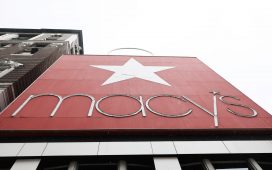Britain is losing out on high spending international visitors after the government scrapped tax-free shopping following its departure from the EU, according to a new data analysis.
There has been a sharp fall in non-EU spending in the UK since the scheme was axed in 2021 after Brexit, making the country an outlier among other major European economies where expenditure has rebounded since the pandemic.
Analysis by the Financial Times found that spending by non-EU visitors in Britain surged in 2021 to £1,612 per capita, on average, from £1,036 in 2020, when Covid travel restrictions were lifted and international flight returned.
However, in 2022, as visitor numbers approached pre-pandemic levels, the figure decreased to £1,346 — by 17 per cent — and maintained a declining trend for the first six months of 2023.
In Italy and Spain, by contrast, tourists have been keen to return to the high street with international expenditure rising over the period. In France, levels remained flat in 2022 before climbing last year.
“What’s clearly happening is that we are losing out on the additional spending that all the other European destinations are getting,” said Paul Barnes, chief executive of the Association of International Retail (AIR) retail lobby.
“The government’s decision has hit British businesses, and British heritage brands in particular, very heavily — as well as our hospitality,” he added.
Retailers said the findings had confirmed fears that the policy reversal would result in loss of revenue and hold back the UK’s economic growth.
The industry had been pushing for the Treasury to reinstate tax-free shopping and extend it to EU visitors, arguing there is a strong economic incentive for doing so.
The UK handed over as much as £1.5bn of sales as tourists headed to France, Italy and Spain instead in 2022, according to a report by AIR published last November.
Tax-free shopping is an arrangement whereby products bought but not consumed in the country of purchase are ultimately sold VAT-free. The VAT can be claimed back as a refund.
On 1 January 2021 the government officially ended tax-free sales in airports, ports and Eurostar stations as well as high streets, leaving outlets exposed to losses. To compensate, some have dipped into their own profits to provide offers that will keep visitors coming back.
The World Duty Free store in London’s Heathrow airport sells luxury-branded cosmetics and perfumes at a so-called reduced “airport price”, which is lower than the high street price.
Despite the UK’s biggest airport trying to replicate a tax-free shopping experience, its retail revenue per passenger has sharply declined since the scheme’s removal.
For the first nine months of 2023, the airport said the average spend per passenger travelling through the airport was £8.65 — down 7 per cent from the same period in 2022. This was despite the number of passengers increasing by 34 per cent to 59.4mn.
“Even if we managed to reduce the price [of products] to try to continue to offer great value to the consumer, negative sentiment among those who are aware of the policy change has created confusion in the market — and this is bleeding into sales,” said Fraser Brown, Heathrow’s retail director.
Some non-EU travellers in London have responded by popping on the Eurostar and heading to Paris to buy luxury goods. This is how Diane Coletta-Marz, a New York-based luxury fashion writer, purchased a Lady Dior bag worth over €5,000 — of which 12 per cent was reimbursed — during her trip to Europe last year.
“With the price difference [from the UK], it’s definitely worth buying a train ticket and travelling for a few hours. Ever since [the UK] got rid of the tax refund, it makes it a no-brainer to travel to buy these things,” she said.
A report by Global Blue, a Swiss payments company, found that the amount spent by US shoppers in Britain in 2022 was 1 per cent higher than in 2019. The research was based on a sample of 11 major brands.
But the figure increased by as much as 126 per cent in France, 101 per cent in Spain, and 90 per cent in Italy.
Data suggest the tax-free perk used to be a key driver of spending among tourists coming to Britain.
In 2019, the scheme was used by 1.2mn non-EU visitors in the UK — 8 per cent of total — which resulted in a tax refund of £500mn.
This amount translated into sales of £3bn, accounting for 17 per cent of total non-EU visitor expenditure that year — with the rest drawn from tax-inclusive shopping, hotel stays, restaurants and other services.
Ahead of scrapping the scheme, the government argued that it was “a costly system to maintain”, amid concerns about a planned expansion of the benefit to all EU visitors.
Since January 2021 Britons travelling to EU countries have been able to take advantage of tax-free shopping.
In September 2022, the government estimated that paying refunds on tax-exempt products and expanding it to cover EU visitors would cost £2bn a year by 2025 — a figure the industry disputes.
Former chancellor Kwasi Kwarteng said he would reintroduce it in his 2022 mini-Budget, but his successor Jeremy Hunt later reversed the planned restoration.
“Assuming that withdrawing the scheme would have no impact on consumer behaviour” was one of the Treasury’ “fundamental flaws”, said Derrick Hardman, Global Blue’s managing director of Finland, UK and Ireland.
A Treasury spokesperson said: “We keep all taxes under review and recognise the value that retailers bring to Britain.”














